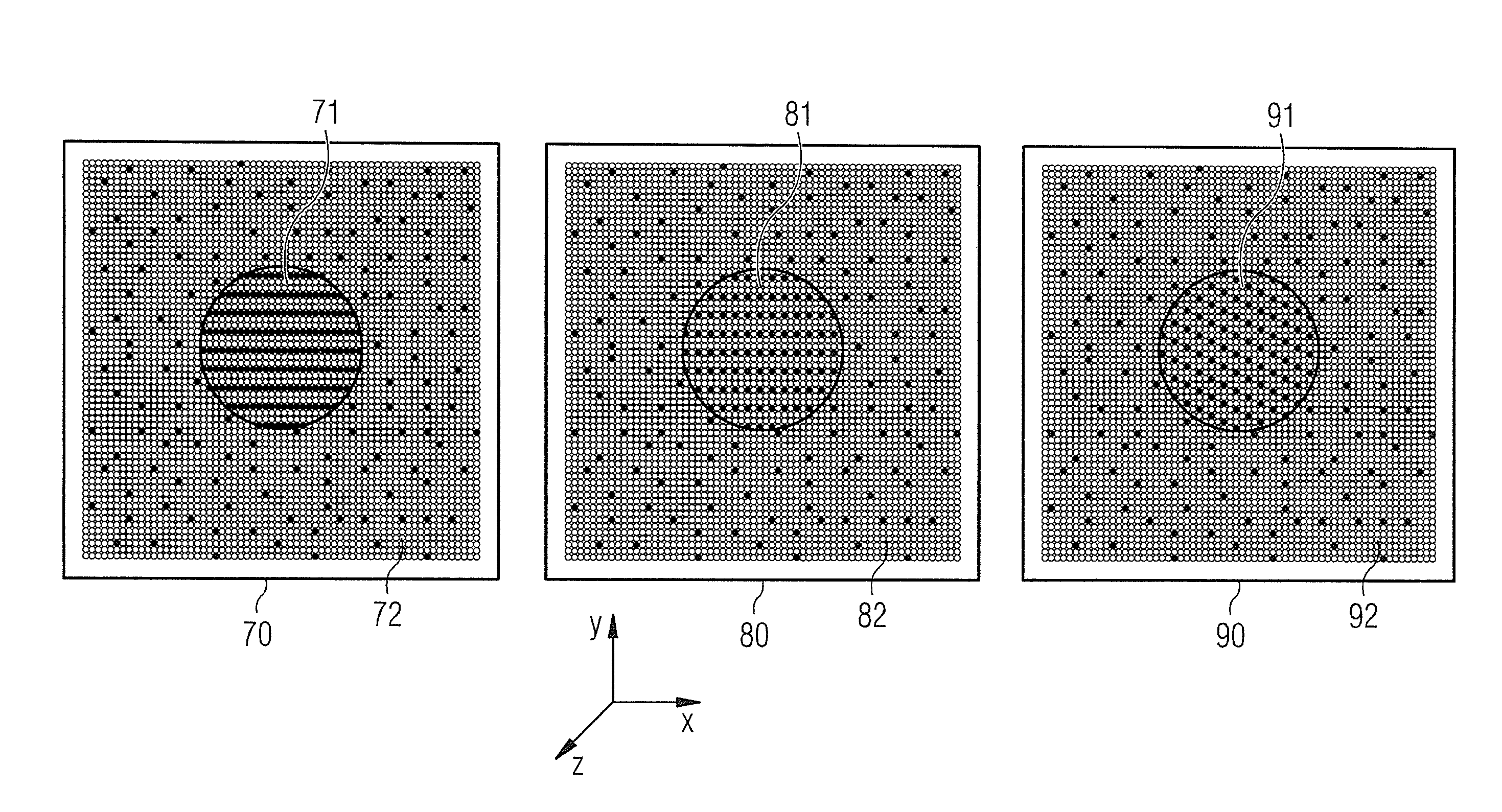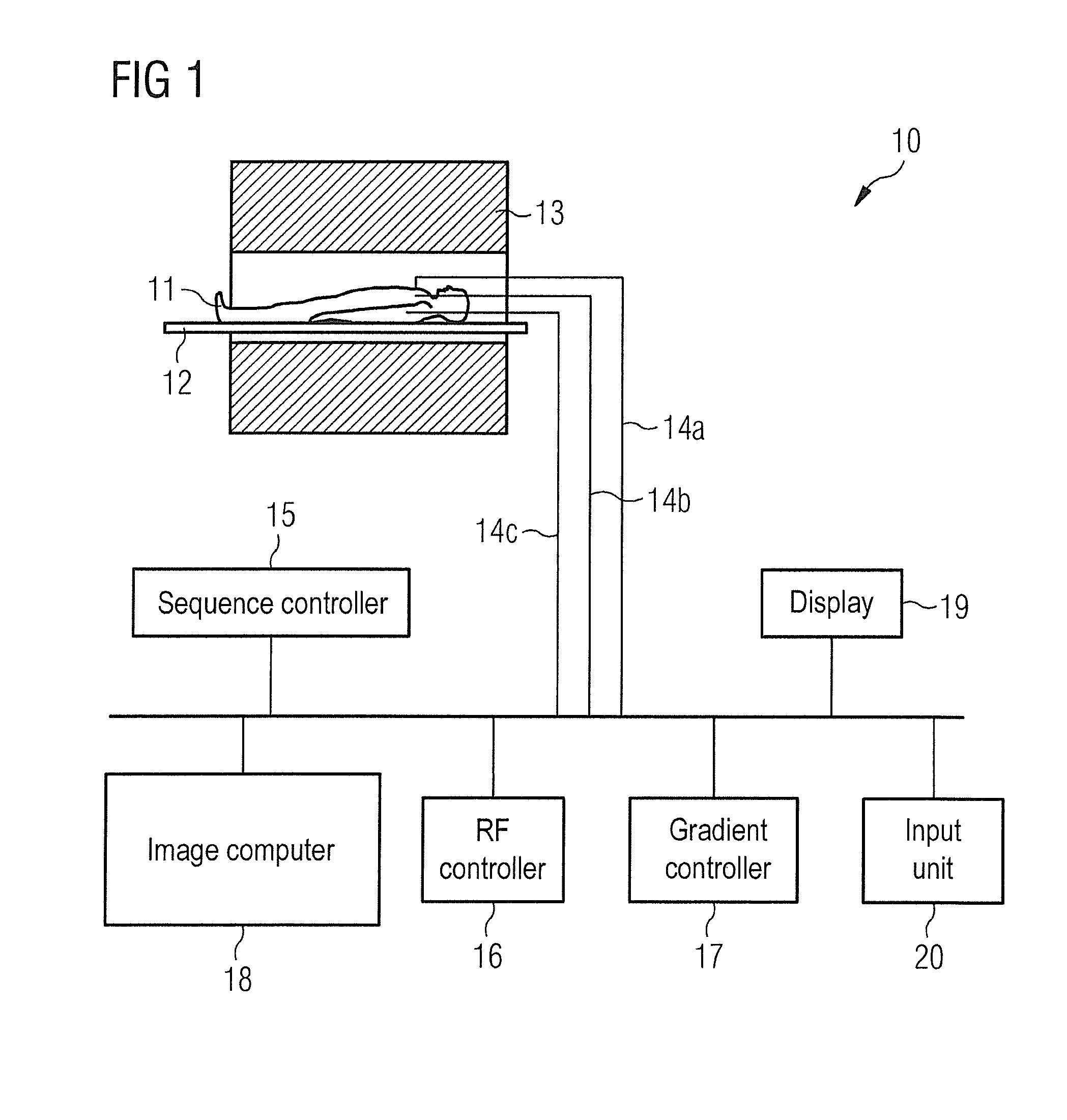Sampling pattern for iterative magnetic resonance image reconstruction
a magnetic resonance image and iterative technology, applied in the field of magnetic resonance system, can solve the problem of limiting the possibilities of undersampling, and achieve the effect of optimally avoiding artifacts due to undersampling, short acquisition time period, and good signal-to-noise ratio
- Summary
- Abstract
- Description
- Claims
- Application Information
AI Technical Summary
Benefits of technology
Problems solved by technology
Method used
Image
Examples
Embodiment Construction
[0023]An MR system 10 with which MR images of an examination subject 11 that is arranged on a bed 12 can be acquired is schematically shown in FIG. 1. The basic magnetization that is generated by a magnet 13 is spatially coded and deflected by switching magnetic field gradients and RF pulses, with the resulting MR signals are detected with multiple MR signal coils 14a through 14c that are arranged around the examination subject 11. For a clearer representation, only the signal lines emanating from the individual reception coils are labeled with 14a through 14c. Depending on the selected imaging sequence, a sequence controller 15 controls the switching of the magnetic field gradients, the RF pulses and the signal readout and establishes the order of the gradient switching, the radiation of the RF pulses and the signal readout. The sequence controller 15 controls an RF control unit 16 that in turn in responsible for the control of the radiated radio-frequency pulses. A gradient contro...
PUM
 Login to View More
Login to View More Abstract
Description
Claims
Application Information
 Login to View More
Login to View More - R&D
- Intellectual Property
- Life Sciences
- Materials
- Tech Scout
- Unparalleled Data Quality
- Higher Quality Content
- 60% Fewer Hallucinations
Browse by: Latest US Patents, China's latest patents, Technical Efficacy Thesaurus, Application Domain, Technology Topic, Popular Technical Reports.
© 2025 PatSnap. All rights reserved.Legal|Privacy policy|Modern Slavery Act Transparency Statement|Sitemap|About US| Contact US: help@patsnap.com



